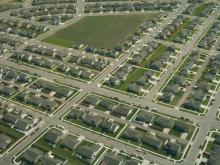Charter Poised to Haul in Half of Montana’s Broadband Grants; Smaller ISPs Raise Questions
Although disappointing for advocates of local Internet choice weary of monopoly providers working to stifle competition, what we are seeing coming out of Montana’s state broadband grant program, Connect MT, shouldn’t be all that surprising.
Last week we learned that the state’s Department of Administration had recommended that nearly half of the Connect MT funding – $126 million – be awarded to Charter Communications, which has been aggressively lobbying Montana legislators (and funding campaigns in opposition to community broadband proposals in other states).
It did not go unnoticed by Montana Free Press deputy editor Eric Dietrich who recently reported that the recommended award to Charter “has plowed into rocky ground as (the state) considers a list of recommended projects this month.”
‘Not Perfect by Any Means’
The story raises questions about the state’s ranking system for proposed projects and notes that the lion’s share of grant money being recommended for Charter “has drawn the ire of smaller, Montana-based companies that want more support for their own networks.”
In hearings this month, Department of Administration Director Misty Ann Giles, the committee’s vice-chair, described the $258 million program as a learning experience for the state government, which hasn’t previously managed a large broadband program. The scoring system the department used to rank applications, she said at an Aug. 2 meeting, ‘is not perfect by any means.’
‘This is a first-in-kind program for the state of Montana, so there’s definitely some lessons learned,’ Giles said.
Giles and committee chair Sen. Jason Ellsworth, R-Hamilton, have also said the state will have the chance to fine-tune its awards process and fund additional projects as it works through additional federal broadband money it expects to receive through the Infrastructure Investment and Jobs Act.
After passage of the American Rescue Plan Act, the Republican-controlled Montana Legislature established advisory committees to make recommendations to the governor about how the state’s Rescue Plan funds should be spent on infrastructure, including broadband.



